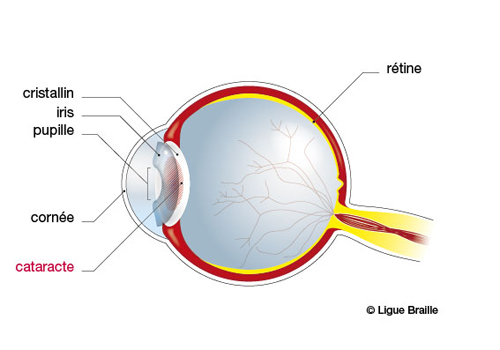Health: innovations against cataracts

Cataract affects nearly 50% of people over 70 years old. An alarming figure, for a disease that alters the vision and may even eventually lead to blindness. Fortunately, there are more and more sophisticated solutions to combat it. This article is reviewed.
What is cataract?
Cataract is caused by loss of transparency of the lens , a small oval lens behind the pupil . The vision is thus altered, because this opacification prevents light rays from reaching the retina properly. Consequences of this phenomenon: the vision becomes blurred, veiled or double, the colors appear more bland and the light dazzles much more easily. Patients often say they have the impression of "seeing through a waterfall".
This disease affects mainly the elderly, since this opacification of the lens is most often due to the aging of the eye . It is considered that 50% of people over 70 are affected by cataracts . In some cases, it can also come from an ocular pathology , some treatments (especially radiotherapy of the orbit), or simply from genetics .
Cataract surgery: the latest techniques
For now, only surgery can help people with cataracts . The principle of these interventions is to replace the natural crystalline , become opaque because of the disease, by an intraocular implant . The operation is frequent and very fast, since it is practiced for several years.
Main difference with the operations that took place a few years ago: the implants are today much smaller, which makes them allows to pass through smaller incisions of a few millimeters. The trauma due to the intervention is therefore reduced (glare, drop in visual quality in low light, etc.). In addition, these implants are of better quality and now better protect the retina from solar radiation. Premium implants have also been developed, allowing at the same time correction of myopia , hypermetropia , astigmatism or presbyopia .
There are also lasers called "femtosecond" , which deliver very precise impulses and can thus grind the nucleus of the lens , without having to remove it manually. The technique is currently uncommon because it is expensive, but it will probably democratize in the coming years.
Bionic contact lenses: soon on the market?
Another solution, currently in full development by the company Ocumetics Technology Corp. and much talked about in 2017: bionic lenses . If they come into being, they could make it possible to correct, for life, all the disorders of the vision and thus to avoid being touched by the cataract . It remains to be seen whether the project will emerge and if it will be a real medical advance!
Given the frequency of this disease, new solutions should also emerge in the coming years!




